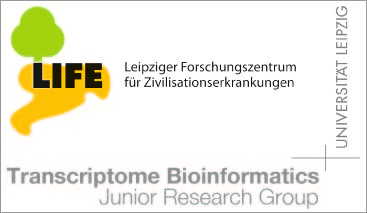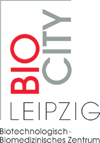Publications - Published papers
Please find below publications of our group. Currently, we list 565 papers. Some of the publications are in collaboration with the group of Sonja Prohaska and are also listed in the publication list for her individual group. Access to published papers ( ) is restricted to our local network and chosen collaborators.
If you have problems accessing electronic information, please let us know:
) is restricted to our local network and chosen collaborators.
If you have problems accessing electronic information, please let us know:
 ) is restricted to our local network and chosen collaborators.
If you have problems accessing electronic information, please let us know:
) is restricted to our local network and chosen collaborators.
If you have problems accessing electronic information, please let us know:©NOTICE: All papers are copyrighted by the authors; If you would like to use all or a portion of any paper, please contact the author.
Long non-coding RNAs differentially expressed between normal versus primary breast tumor tissues disclose converse changes to breast cancer-related protein-coding genes.
Reiche K, Kasack K, Schreiber S, Lüders T, Due EU, Naume B, Riis M, Kristensen VN, Horn F, Børresen-Dale AL, Hackermüller J, Baumbusch LO
Download
PREPRINT 15-003:
[ Publishers's page ]
[ Publishers's page ]
Status: Published
PLoS One. 2014 Sep 29;9(9):e106076
Abstract
Breast cancer, the second leading cause of cancer death in women, is a highly heterogeneous disease, characterized by distinct genomic and transcriptomic profiles. Transcriptome analyses prevalently assessed protein-coding genes; however, the majority of the mammalian genome is expressed in numerous non-coding transcripts. Emerging evidence supports that many of these non-coding RNAs are specifically expressed during development, tumorigenesis, and metastasis. The focus of this study was to investigate the expression features and molecular characteristics of long non-coding RNAs (lncRNAs) in breast cancer. We investigated 26 breast tumor and 5 normal tissue samples utilizing a custom expression microarray enclosing probes for mRNAs as well as novel and previously identified lncRNAs. We identified more than 19,000 unique regions significantly differentially expressed between normal versus breast tumor tissue, half of these regions were non-coding without any evidence for functional open reading frames or sequence similarity to known proteins. The identified non-coding regions were primarily located in introns (53%) or in the intergenic space (33%), frequently orientated in antisense-direction of protein-coding genes (14%), and commonly distributed at promoter-, transcription factor binding-, or enhancer-sites. Analyzing the most diverse mRNA breast cancer subtypes Basal-like versus Luminal A and B resulted in 3,025 significantly differentially expressed unique loci, including 682 (23%) for non-coding transcripts. A notable number of differentially expressed protein-coding genes displayed non-synonymous expression changes compared to their nearest differentially expressed lncRNA, including an antisense lncRNA strongly anticorrelated to the mRNA coding for histone deacetylase 3 (HDAC3), which was investigated in more detail. Previously identified chromatin-associated lncRNAs (CARs) were predominantly downregulated in breast tumor samples, including CARs located in the protein-coding genes for CALD1, FTX, and HNRNPH1. In conclusion, a number of differentially expressed lncRNAs have been identified with relation to cancer-related protein-coding genes.
Keywords
keywords















